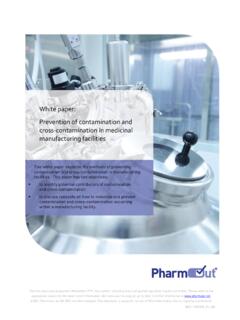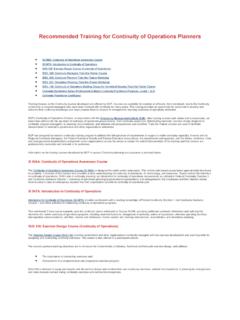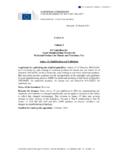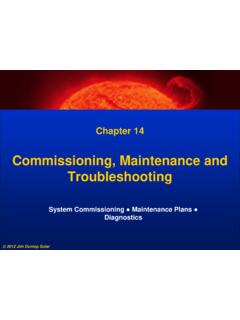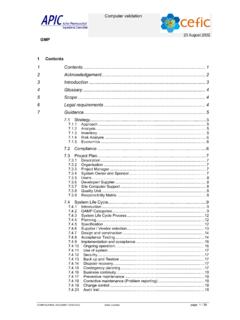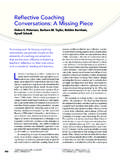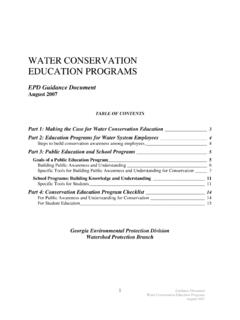Transcription of How to implement Good Documentation Practices - PharmOut
1 White paper: How to implement good Documentation Practices This white paper describes the fundamental requirements of good Documentation Practice (GDP) routinely used within the pharmaceutical industry as best practice standards or as a direct requirement of the Code of good Manufacturing Practice (GMP). This document was prepared in February 2016, any content including links and quoted regulation may be out of date. Please refer to the appropriate source for the most recent information. We endeavour to keep an up-to-date record of information at 2016 PharmOut . This document has been prepared solely for the use of PharmOut and its clients. Copying is prohibited. MKT_TMP200_01_r06. PharmOut white paper: How to implement good Documentation Practices Why are document standards important? In a GMP environment Documentation needs to meet certain requirements to ensure product quality and product safety.
2 If an instruction or record is poorly documented, then the manufacture or Quality assurance/control of a product can be negatively impacted, potentially reducing patient safety. The GMP regulations from PIC/S, FDA and EU all include mandatory sections on Documentation . Documentation provides both: Information on when, where, who, why and how to complete tasks, and Evidence proving that the tasks have been completed as they should be. Consequently, the standard of Documentation within a company can directly impact the level of success in manufacturing quality products that are safe as well as success during audit situations. The basics of GDP. To meet industry standards, it is critical that all Documentation follows GDP when it affects: GMP processes material or product identity, quality, purity, strength and safety the validated state of GMP product manufacture, facilities, equipment, computer systems and testing methods.
3 It is recommended that your company has a policy or procedure outlining the expected GDP. standards, particularly for those requirements that may be unique to your company for example, using a specific pen colour or when and how to use scanned documents/records as original data. PharmOut Pty Ltd, ABN: 85 117 673 766, Unit 10, 24 Lakeside Drive, Burwood East, Victoria 3151. Ph: +61 3 9887 6412, Fax: +61 3 8610 0169, Email: Web: 2016 PharmOut . This document has been prepared solely for the use of PharmOut and its clients. Copying is prohibited. Page 2 of 17 MKT_TMP200_01_r06. PharmOut white paper: How to implement good Documentation Practices Documentation is a valuable resource Documentation may be divided into: documents procedural or instructional Documentation , and records evidence of compliance. Refer to EU GMP Chapter 4 for further information on different types of documents.
4 Both documents and records are an invaluable communication tool for any business. Benefit Description Form of Documentation Provide background history Information storage point for anyone Record to access. Information can be added at any time, providing a full history. Preserves learning and Reference for future use or a means Document knowledge to communicate information to others. Particularly important to ensure that knowledge is not lost when an employee leaves. Protects intellectual Evidence of an idea or a finding Record property including the date and the responsible person. Provides legally valid Documents events, processes, ideas, Record evidence communications etc. which can show that something did or did not happen. Ensure the quality and Provides the same critical Document consistency of information and training to all processes/activities/manuf relevant employees, to ensure the -acturing quality and safety of the product.
5 PharmOut Pty Ltd, ABN: 85 117 673 766, Unit 10, 24 Lakeside Drive, Burwood East, Victoria 3151. Ph: +61 3 9887 6412, Fax: +61 3 8610 0169, Email: Web: 2016 PharmOut . This document has been prepared solely for the use of PharmOut and its clients. Copying is prohibited. Page 3 of 17 MKT_TMP200_01_r06. PharmOut white paper: How to implement good Documentation Practices Different types of documents and records Documentation and records used throughout the manufacturing process, as well as supporting processes ( Quality Control or Quality Assurance), must meet the basic requirements of GDP. These include (but are not limited to): Batch Record Forms Bills of Materials (BOMs). Specifications Policies Protocols Standard Operating Procedures (SOPs). Work Instructions (WIs). Test Methods Checklists Forms/Log sheets Training Assessments Electronic and hardcopy Quality records ( non-conformance, corrective and preventative actions, internal inspection, change control, training records etc.)
6 Certificate of Analyses (CoA) or Certificate of Compliance (CoC). Technical transfer reports Validation Documentation PharmOut Pty Ltd, ABN: 85 117 673 766, Unit 10, 24 Lakeside Drive, Burwood East, Victoria 3151. Ph: +61 3 9887 6412, Fax: +61 3 8610 0169, Email: Web: 2016 PharmOut . This document has been prepared solely for the use of PharmOut and its clients. Copying is prohibited. Page 4 of 17 MKT_TMP200_01_r06. PharmOut white paper: How to implement good Documentation Practices General requirements The following requirements should be applied to all Documentation within the GMP. environment. General elements GDP requirements All documents must be accurate and written in a manner that prevents errors and ensures consistency. If documents are to be used together, Clearly written an SOP and a form, then each should reference the other. Documentation Ensure there is traceability between two or more documents/records using formal document numbers or record identification.
7 All records must be filled out in indelible ink for long term legibility. Do not use pencil or ink that can be erased. Using indelible ink Colour should be specified by the company GDP procedure; often this is limited to blue or black because historically copy/scanning technology was limited in reproduction quality. However, this is less of a factor with the advent of high resolution scanners and colour copiers. Consistent use of blue and black ink on GMP Documentation provides a A document is unusable if it cannot be read, so care must be taken to more professional perception of your organisation. ensure that handwriting is legible. All entries must be made at the time Legible handwritten the tasks are performed and should be legibly signed and dated. entries The same is true of electronic documents and records language should be clear and unambiguous. Documents and records should be reviewed by someone who did not Reviewing and perform the task to ensure that the information is correct and approving accurate.
8 A signature and date by the reviewer/approver confirms that a review has taken place. Unsigned documents or records are incomplete and should not be used Handwritten signatures must be unique to the individual and listed to perform any task or considered as evidence of a completed task. within the site signature register to ensure that the signature is traceable to a member of staff (or contractor). Staff are not permitted to sign for another member of staff unless delegated. Signatures must never be forged. Staff signatures The management of the signature record should be governed by a procedure and routinely reviewed so that it remains current new staff should sign the signature register during induction, the signature register must indicate the date staff exit the company. Electronic signatures must meet the same general Documentation requirements refer to EU Annex 11: Computerised Systems or PIC/S Annex 11: Computerized Systems for additional regulatory requirements.
9 PharmOut Pty Ltd, ABN: 85 117 673 766, Unit 10, 24 Lakeside Drive, Burwood East, Victoria 3151. Ph: +61 3 9887 6412, Fax: +61 3 8610 0169, Email: Web: 2016 PharmOut . This document has been prepared solely for the use of PharmOut and its clients. Copying is prohibited. Page 5 of 17 MKT_TMP200_01_r06. PharmOut white paper: How to implement good Documentation Practices General elements GDP requirements In the event that a critical member of staff is absent for a time, they must delegate responsibility to another qualified person. The delegation must be either: Signed delegation of proceduralised in a document (SOP, WI etc.), or responsibility documented with names of all people involved and signed by the person that is delegating their responsibility. The delegation should also be approved with the signature of a more senior member of staff. GMP documents should have page numbers using the following Page numbering standard X of Y' to indicate the total number of pages in a document.
10 PharmOut Pty Ltd, ABN: 85 117 673 766, Unit 10, 24 Lakeside Drive, Burwood East, Victoria 3151. Ph: +61 3 9887 6412, Fax: +61 3 8610 0169, Email: Web: 2016 PharmOut . This document has been prepared solely for the use of PharmOut and its clients. Copying is prohibited. Page 6 of 17 MKT_TMP200_01_r06. PharmOut white paper: How to implement good Documentation Practices Records must be permanent Traceability of records in the GMP environment is of critical importance so that: the company can prove they are compliant to the Code of GMP and to their own processes and procedures the root cause of a non-conformance or a justified customer complaint can be identified corrective or preventative actions can be implemented and their effectiveness checked over time. It is imperative that records are accurate and any changes or amendments are made in a complaint manner. General requirements No Requirement 1 Deliberately amending or destroying GMP records to hide or falsify data is fraud.








